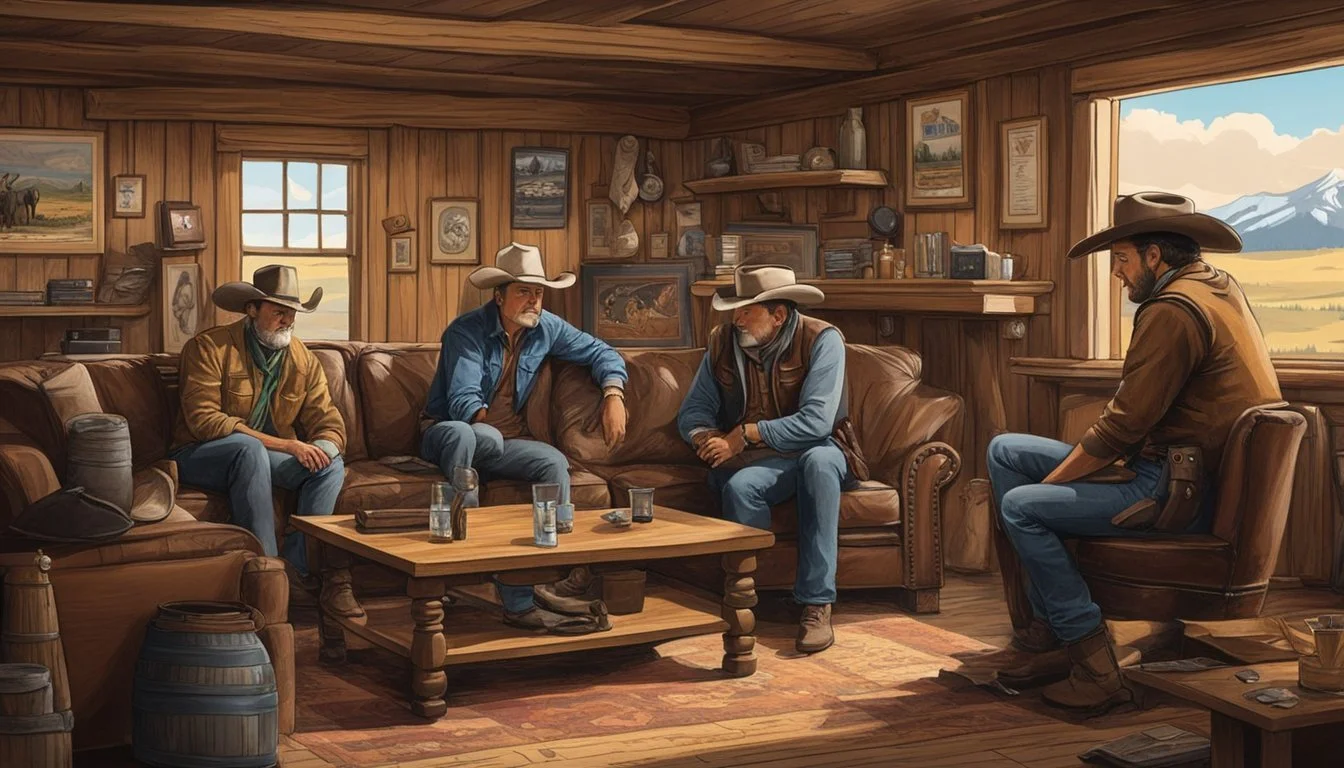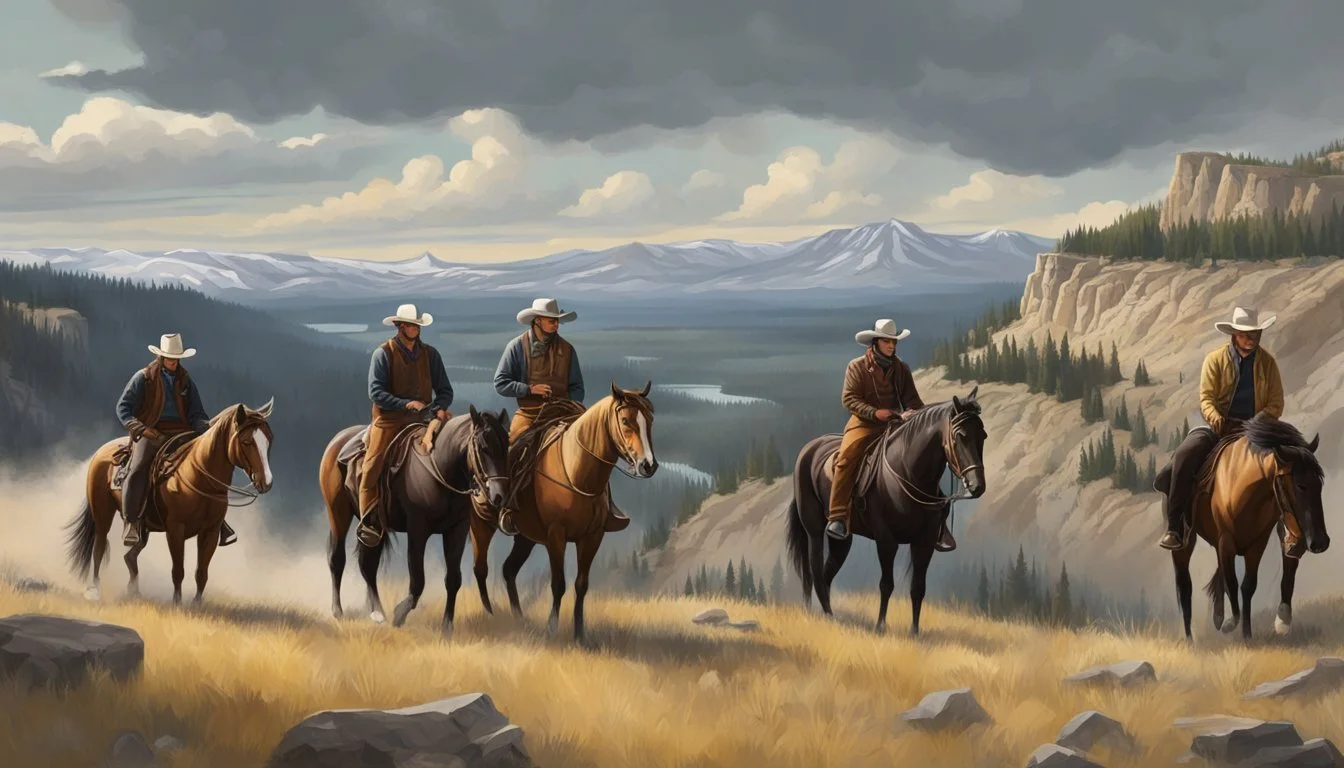Discover the Jaw-Dropping Acreage of the Yellowstone Show's Dutton Ranch
The sprawling Yellowstone Dutton Ranch captivates viewers with its breathtaking vistas and serves as the centerpiece of the hit TV series "Yellowstone." Set against the rugged backdrop of Montana, this fictional property sparks curiosity about its true size and value.
The Yellowstone ranch encompasses approximately 777,000 acres, making it comparable in size to the state of Rhode Island. This vast expanse of land showcases the grandeur of the American West, providing a stunning setting for the show's intense family drama and power struggles.
While the exact worth of the ranch is not explicitly stated in the series, its immense acreage and prime location suggest a value in the billions of dollars. The property's size has reportedly grown by 200,000 acres since John Dutton took ownership, further cementing its status as a coveted piece of real estate in the fictional Montana landscape.
Yellowstone Show Overview
"Yellowstone" is a popular television series that premiered on the Paramount Network in 2018. Created by Taylor Sheridan, the show follows the Dutton family, led by patriarch John Dutton, as they navigate the challenges of running a vast cattle ranch in Montana.
Set against the backdrop of the American West, "Yellowstone" captures the raw beauty and rugged landscapes of Montana. The series blends elements of Western, family drama, and political intrigue to create a compelling narrative.
The Dutton Ranch, central to the show's plot, is portrayed as an enormous property spanning hundreds of thousands of acres. This fictional ranch serves as a symbol of power, legacy, and the changing face of the American frontier.
"Yellowstone" has garnered a dedicated fanbase and critical acclaim for its storytelling and performances. The show's success has led to the creation of spin-off series, including "1883" and "1923," which explore different eras of the Dutton family history.
Key themes in "Yellowstone" include:
Family loyalty
Land preservation
Political maneuvering
Clash between tradition and progress
The series showcases the complexities of modern ranching, intertwining personal conflicts with larger societal issues affecting the American West.
The Setting of Yellowstone
The Yellowstone TV series takes place in the rugged landscapes of Montana, showcasing breathtaking vistas and vast rangelands. The show's setting blends real and fictional locations to create a captivating backdrop for its dramatic storylines.
Geographical Context
Yellowstone is set in Montana's scenic regions, including the Bitterroot Valley and Paradise Valley. The fictional Yellowstone Dutton Ranch borders Yellowstone National Park and the equally fictional Broken Rock Reservation. Ravalli County and Park County serve as key filming locations, capturing Montana's diverse terrain.
The show's creators chose these areas for their stunning natural beauty and quintessential "Big Sky Country" aesthetics. Rolling plains, snow-capped mountains, and pristine rivers paint a vivid picture of the American West.
Dutton Ranch Layout
The Dutton Ranch, central to the show's plot, is portrayed by the real-life Chief Joseph Ranch in Darby, Montana. This 2,500-acre working cattle ranch doubles as the fictional 500,000-acre Yellowstone Ranch.
The ranch's iconic log mansion serves as the Dutton family home. It features a large great room, spacious porches, and panoramic views of the surrounding landscape. Barns, corrals, and vast pastures complete the ranch's layout.
Filming locations extend beyond the main ranch, incorporating nearby forests, rivers, and mountains to depict the expansive Dutton property. These diverse settings provide a rich backdrop for the show's many outdoor scenes and cattle operations.
Comparative Size and Valuation
The Yellowstone ranch's size and value are staggering compared to real-world properties. Its fictional acreage exceeds even the largest actual ranches, while its estimated worth reaches into the billions.
Ranch Size Comparison
The Yellowstone ranch is described as being larger than Rhode Island, which covers 776,900 acres. This puts it above the 825,000-acre King Ranch in Texas, America's largest real ranch. For context, the 6666 Ranch in Texas spans 266,000 acres. The fictional Dutton property dwarfs even substantial real-world holdings like the 525,000-acre Waggoner Ranch, once owned by W.T. Waggoner.
By comparison, many working ranches are far smaller. The Ford-Hollister Ranch in California, founded by William S. Ford and Howard Clark Hollister, covers only 14,400 acres. The Chief Joseph Ranch in Montana, which serves as the Yellowstone set, is just 2,500 acres.
Economic Value
The Yellowstone ranch's worth is estimated at over $8 billion, based on a speculated value of $10,000 per acre. This valuation far surpasses real luxury ranches. For instance, the Waggoner Ranch sold for $725 million in 2015 to Stan Kroenke.
Land developers and corporations frequently pressure the Duttons to sell, highlighting the property's immense value. The ranch's worth stems from its vast size, prime location, and natural resources. Its value to Native American tribes is also significant, though not easily quantified in monetary terms.
Properties and Facilities
The Yellowstone ranch boasts an impressive array of structures and operations that support its vast cattle ranching enterprise. From luxurious living quarters to functional agricultural facilities, the property showcases the blend of rugged frontier living and modern amenities.
Residential and Guest Structures
The Dutton family resides in the main lodge, a spacious home that serves as the heart of the ranch. Surrounding it are several cabins that house family members and guests. Rip's cabin provides a cozy retreat for the ranch foreman. Jamie Dutton occupies his own cabin on the property. The Ben Cook cabin and Fisherman cabin offer rustic accommodations for visitors. Lee Dutton's cabin stands as a memorial to the fallen son.
A bunkhouse houses the ranch hands, providing a communal living space for the workers. The property also functions as a guest ranch, allowing visitors to experience the cowboy lifestyle firsthand. These structures blend seamlessly into the Montana landscape, offering stunning views of the surrounding wilderness.
Agricultural and Livestock Operations
The Yellowstone ranch operates as a working cattle ranch, with extensive facilities to support its livestock. Large barns dot the property, providing shelter for animals and storage for equipment. The ranch's pastures stretch across thousands of acres, offering ample grazing land for the cattle herds.
Specialized areas for cattle management include corrals, loading chutes, and veterinary facilities. The ranch also maintains facilities for its prized quarter horses, essential for daily ranch operations and cattle drives. Hay fields and storage areas ensure a year-round food supply for the livestock.
Irrigation systems help maintain the pastures, while fencing divides the land into manageable sections. The ranch's agricultural operations extend beyond cattle, with areas dedicated to crop cultivation to support the livestock and generate additional income.
Cultural and Historical Significance
The Yellowstone series draws deeply from the rich cultural tapestry and complex history of the American West. Its portrayal of land ownership, family dynamics, and indigenous issues resonates with viewers while sparking important conversations.
Historical Roots
The show's setting taps into the legacy of the Nez Perce War of 1877. This conflict between the U.S. government and the Nez Perce tribe, led by Chief Joseph, left an indelible mark on the region. The war stemmed from attempts to force the Nez Perce onto reservations, a theme echoed in Yellowstone's storylines.
Chief Thomas Rainwater's character embodies modern Native American struggles for land rights and sovereignty. His conflicts with John Dutton mirror historical tensions between indigenous peoples and white settlers.
Taylor Sheridan, the show's creator, infuses Yellowstone with authentic Western elements. He draws from his own experiences growing up on a ranch, lending credibility to the series' depiction of ranch life and culture.
Representation in Media
Yellowstone has transformed the portrayal of the modern American West in entertainment. The show's success on the Paramount Network and streaming platforms has revitalized interest in Western-themed content.
Its stunning visuals of Montana's landscapes, captured at various filming locations, have boosted tourism to the region. Fans flock to experience the breathtaking vistas showcased in the series.
The show's fashion choices have influenced trends, with viewers embracing Western-inspired clothing. This cultural impact extends beyond entertainment, shaping how people perceive and engage with Western aesthetics.
Yellowstone's nuanced exploration of contemporary issues facing ranchers and indigenous communities has sparked discussions about land use, family legacies, and the evolving nature of the American West.
Comparisons and Contrasts
The Yellowstone ranch in the TV series has captivated audiences with its vast scale and stunning landscapes. While fictional, it draws inspiration from real-world ranches and has impacted perceptions of ranch life.
Real vs. Fictional Ranches
The fictional Yellowstone ranch is portrayed as larger than Rhode Island's 776,900 acres. This makes it even more expansive than the King Ranch in Texas, which spans 825,000 acres and is considered the largest in the United States.
Real cattle ranches like the 6666 Ranch in Texas serve as inspiration for the show's depiction of ranch operations. These working ranches manage thousands of cattle and horses across vast acreages.
The show estimates the Yellowstone ranch's worth at over $8 billion, based on a speculative value of $10,000 per acre. This figure far exceeds the market value of most real ranches.
Yellowstone's Influence
The popularity of Yellowstone has sparked increased interest in ranch life and properties. Fans of the show have been drawn to the romanticized portrayal of the cowboy lifestyle.
This phenomenon has impacted real estate markets in states like Montana, where the show is set. Some wealthy buyers seek to purchase large parcels of land, inspired by the fictional Dutton ranch.
The show highlights conflicts between traditional ranching and modern development pressures. This reflects real challenges faced by many cattle ranches today.
Yellowstone's portrayal of ranch life, while dramatized, has brought attention to the complexities of managing large-scale agricultural operations in the American West.





